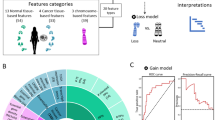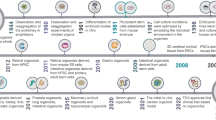Abstract
Solid tumors become acidic due to hypoxia and upregulated glycolysis. We have hypothesized that this acidosis leads to more aggressive invasive behavior during carcinogenesis (Nature Reviews Cancer 4:891–899, 2004). Previous work on this subject has shown mixed results. While some have observed an induction of metastasis and invasion with acid treatments, others have not. To investigate this, human melanoma cells were acclimated to low pH growth conditions. Significant cell mortality occurred during acclimation, suggesting that acidosis selected for resistant phenotypes. Cells maintained under acidic conditions exhibited a greater range of motility, a reduced capacity to form flank tumors in SCID mice and did not invade more rapidly in vitro, compared to non-selected control cells. However, re-acclimation of these selected cells to physiological pH gave rise to stable populations with significantly higher in vitro invasion. These re-acclimated cells maintained higher invasion and higher motility for multiple generations. Transcriptomic analyses of these three phenotypes revealed significant differences, including upregulation of relevant pathways important for tissue remodeling, cell cycle control and proliferation. These results reinforce the hypothesis that acidosis promotes selection of stable, more invasive phenotypes, rather than inductive changes, which would be reversible.








Similar content being viewed by others
Abbreviations
- DMEM:
-
Dulbecco’s Modified Eagle’s Medium
- MAPK:
-
Mitogen-activated protein kinase
- MMP:
-
Matrix metalloproteinase
References
Bernards R, Weinberg RA (2002) A progression puzzle. Nature 418:823–823
Yun Z, Giaccia AJ (2003) Tumor deprivation of oxygen and tumor suppressor gene function. Method Mol Biol 223:485–504
Koumenis C, Alarcon R, Hammond E et al (2001) Regulation of p53 by hypoxia: dissociation of transcriptional repression and apoptosis from p53-dependent transactivation. Mol & Cell Biol 21:1297–1310
Yasuda S (1995) Hexokinase II and VEGF expression in liver tumors: correlation with hypoxia-inducible factor 1 and its significance. Proc Natl Acad Sci USA 92:5965–5968
Czernin J, Phelps ME (2002) Positron emission tomography scanning: current and future applications. Ann Rev Med 53:89–112
Schornack PA, Gillies RJ (2003) Contributions of cell metabolism and H + diffusion to the acidic pH of tumors. Neoplasia (New York) 5:135–145
Gillies RJ, Raghunand N, Karczmar G et al (2002) MR Imaging of the tumor microenvironment. J Magn Reson Imaging 16:430–450
Park H, Lyons JC, Ohtsubo T et al (1999) Acidic environment leads to p53 dependent induction of apoptosis in human adenoma and carcinoma cell lines: implications for clonal selection during colorectal carcinogenesis. Oncogene 18:3199–3204
Williams AC, Collard TJ, Paraskeva C (1999) An acidic environment leads to p53 dependent induction of apoptosis in human adenoma and carcinoma cell lines: implications for clonal selection during colorectal carcinogenesis. Oncogene 18:3199–3204
Shrode LD, Tapper H, Grinstein S (1997) Role of intracellular pH in proliferation, transformation, and apoptosis. J Bioenerg Biomembr 29:393–399
Park HJ, Lyons JC, Ohtsubo T et al (1999) Acidic environment causes apoptosis by increasing caspase activity. Br J Cancer 80:1892–1897
Gatenby RA, Gawlinski ET (1996) A reaction-diffusion model of cancer invasion. Cancer Res 56:5745–5753
Rozhin J, Sameni M, Ziegler G et al (1994) Pericellular pH affects distribution and secretion of cathepsin B in Malignant Cells. Cancer Res 54:6517–6525
Sounni NE, Noel A (2005) Membrane-Type Matrix Metalloproteinases and Tumor Progression. Biochimie 87:329–342
Martinez-Zaguilan R, Seftor EA, Seftor RE et al (1996) Acidic pH enhances the invasive behavior of human melanoma cells. Clin Exp Metastasis 14:176–186
Rochefort H, Chalbos D, Cunat S et al (2001) Estrogen regulated proteases and antiproteases in ovarian and breast cancer cells. J Steroid Biochem Mol Biol 76:119–124
Ferrier CM, van Muijen GNP, Song CW (1998) Proteases in cutaneous melanoma. Ann Med 30:431–442
Goretzki L (1992) Effective activation of the proenzyme for of the urokinase-type plasminogen activator (pro-uPA) by the cysteine protease cathepsin L. FEBS Lett 297:112–118
Hanahan D, Weinberg RA (2000) The hallmarks of cancer. [Review] [94 refs]. Cell 100:57–70
Schlappack OK, Zimmermann A, Hill RP (1991) Glucose starvation and acidosis: effect on experimental metastatic potential, DNA content and MTX resistance of murine tumour cells. Br J Cancer 64:663–670
Webb SD, Sherratt JA, Fish RG (1999) Alterations in proteolytic acitivity at low pH and its association with invasion: a theoretical model. Clin Exp Metastasis 17:397–407
Rofstad EK, Mathiesen B, Kindem K et al (2006) Acidic extracellular pH promotes experimental metastasis of human melanoma cells in athymic nude mice. Cancer Res 66:6699–6707
Krishnamurty C, Rodriguez J, Raghunand N et al (2005) Automatic Lesion tracking in echo-planar diffusion weighted liver MRI: an active countour based approach. Proc Int Soc Magn Reson Med 13:1889
Wolber PK, Whannon KW, Fulmer-Smentek SB et al (2002) Robust local normalization of gene expression microarray data. Agilent Technical Note 1015:1–4
Khatri P, Draghici S, Ostermeier GC et al (2002) Profiling Gene Expression Utilizing Onto-express. Genomics 79:266–270
Diez H, Fischer A, Winkler A et al (2007) Hypoxia-mediated activation of Dll4-Notch-Hey2 signaling in endothelial progenitor cells and adoption of arterial cell fate. Exp Cell Res 313:1–9
Barbera MJ, Puig I, Dominguez D et al (2004) Regulation of Snail transcription during epithelial to mesenchymal transition of tumor cells. Oncogene 23:7345–7354
Imai T, Horiuchi A, Wang C et al (2003) Hypoxia attenuates the expression of E-cadherin via up-regulation of SNAIL in ovarian carcinoma cells. Am J Pathol 163:1437–1447
Miyoshi A, Kitajima Y, Sumi K et al (2004) Snail and SIP1 increase cancer invasion by upregulating MMP family in hepatocellular carcinoma cells. Br J Cancer 90:1265–1273
Helmlinger G, Yuan F, Dellian M et al (1997) Interstitial pH and pO2 gradients in solid tumors in vivo: high-resolution measurements reveal a lack of correlation. Nat Med 3:177–182
Gatenby RA, Gillies RJ (2004) Why do cancers have high aerobic glycolysis? Nat Rev Cancer 4:891–899
Acknowledgements
NIH R01 CA077575 (RJG); NIH R01 CA093650 (RAG); Beckman Foundation Undergraduate Fellowship (KB); Howard Hughes Medical Institute grant #52003749 (REM).
Author information
Authors and Affiliations
Corresponding author
Electronic supplementary material
Below is the link to the electronic supplementary material.
10585_2008_9145_MOESM1_ESM.tif
Supplemental Figure 1. Quantitative fluorescent tracking of invasion. MB-MDA-231 cells were acid-selected and tested for invasive potential exactly as discussed in Materials and Methods for C8161 melanoma cells and Figure 4. (TIF 2043 kb)
Rights and permissions
About this article
Cite this article
Moellering, R.E., Black, K.C., Krishnamurty, C. et al. Acid treatment of melanoma cells selects for invasive phenotypes. Clin Exp Metastasis 25, 411–425 (2008). https://doi.org/10.1007/s10585-008-9145-7
Received:
Accepted:
Published:
Issue Date:
DOI: https://doi.org/10.1007/s10585-008-9145-7




